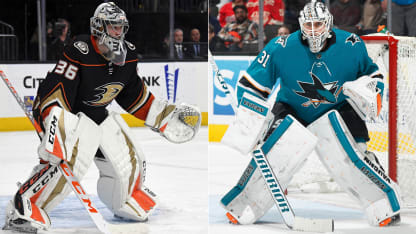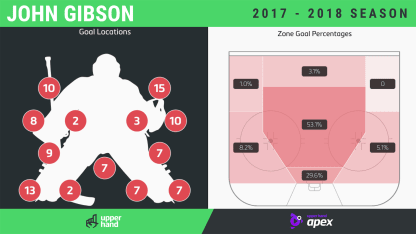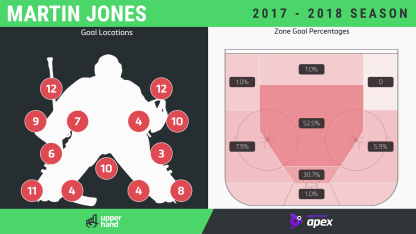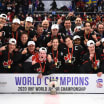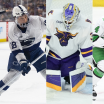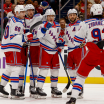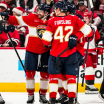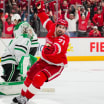5-hole: Jones' 18 goals between the pads came on a variety of different kinds of scoring plays, but one stood out. On screened shots from the point, which accounted for 23 of the 100 goals tracked on Jones, who at 6-foot-4 prefers to try to look up and over the traffic in front of his net. When you combine that with a tendency to pull back as he drops into a butterfly rather than driving forward and down, it creates some openings under the pads that led to goals on low shots that got through that traffic in front.
Left to right: Most goalies have one direction they move better, but not all as readily evident as Jones. Like most goalies, he is better to the glove side, but his movement to the blocker lacks the same early rotation. That creates flat pushes parallel to the goal line that used to leave him chasing plays past his post and stranded outside his crease more when moving right. There seemed to be a lot fewer instances of it this season, but the 23 mid- and high-blocker goals and seven under that arm are above the averages and sometimes a function of those issues.
Sharp angles: Jones uses a variety of post-integration techniques depending on the type of attack and its proximity to the goal line, hasn't traditionally lingered in any of them too long, and got beat twice from during his run to the Stanley Cup Final in 2016. But he gave up 11 goals from near or below the goal line this season, and 33 goals on low-high plays, so it will be interesting to see if the Ducks try to attack what has traditionally been an area of strength from bad angles.
Tightening up: It was surprising to see 20 goals under the arms last season, but things were tighter this season, with four getting between his body and the glove-side arm. That's more what you expect from a goalie who has shown good, active hands when needed, but typically relies on positioning and patience to force opponents to beat him with perfect shots.
Numbers that jump out: There aren't many extremes, which isn't surprising given Jones' well-balanced approach, but his 29 against-the-grain goals are almost double the average.
